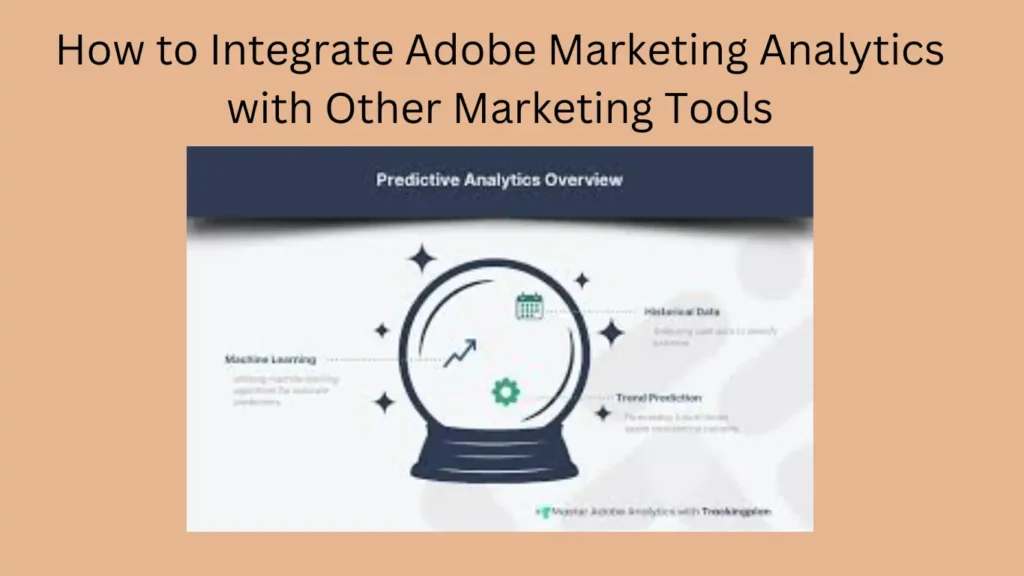Integrating Adobe Marketing Analytics with other marketing tools is crucial for gaining comprehensive insights and optimizing your marketing efforts. This guide explores step-by-step methods to seamlessly integrate Adobe Marketing Analytics with other tools, ensuring you maximize data utilization and enhance marketing strategies effectively, with a focus on creating helpful, reliable, people-first content.
1. Understanding Integration Benefits
Enhanced Data Insights
- Combined Data Sources: Integrate Adobe Marketing Analytics with tools like Adobe Campaign, Adobe Audience Manager, and CRM systems to consolidate data sources.
- Comprehensive Reporting: Gain holistic insights into customer behavior, campaign performance, and ROI across various channels.
2. Preparing for Integration
Data Preparation
- Data Mapping: Align data fields and formats between Adobe Marketing Analytics and other tools for seamless integration.
- Data Quality: Ensure data cleanliness and consistency across platforms to maintain accuracy in reporting and analysis.
3. Integration Methods
API Integration
- Utilizing APIs: Leverage APIs provided by Adobe Marketing Cloud to connect with other marketing tools and platforms.
- Custom Development: Implement custom scripts or middleware solutions for specific integration requirements and functionalities.
4. Setting Up Data Flows
Automated Data Sync
- Scheduled Syncs: Establish regular data synchronization schedules between Adobe Marketing Analytics and integrated tools to ensure real-time data availability.
- Data Mapping: Define mapping rules to ensure data fields are correctly mapped and updated during sync processes.
5. Utilizing Integrated Insights
Unified Customer View
- Single Customer View: Merge data from various sources to create a unified customer profile across channels and touchpoints.
- Personalization: Use integrated insights to deliver personalized marketing campaigns and experiences based on enriched customer data.
6. Optimizing Campaign Performance
Data-Driven Decisions
- Campaign Optimization: Analyze integrated data to optimize targeting, messaging, and campaign performance.
- A/B Testing: Conduct A/B tests using integrated insights to refine marketing strategies and improve ROI.
7. Ensuring Data Security and Compliance
Data Protection
- GDPR Compliance: Ensure compliance with data protection regulations (e.g., GDPR, CCPA) when integrating and handling customer data.
- Data Encryption: Implement encryption protocols and secure data transmission methods to protect sensitive information during integration processes.
8. Monitoring and Maintenance
Continuous Monitoring
- Performance Monitoring: Monitor integration performance and data accuracy regularly to identify and resolve issues promptly.
- Scalability: Plan for scalability as your business grows, ensuring integration solutions can accommodate increased data volume and complexity.
Conclusion
Integrating Adobe Marketing Analytics with other marketing tools enhances data visibility, improves campaign effectiveness, and enables personalized customer experiences. By following best practices for integration, maintaining data quality, and leveraging integrated insights, marketers can optimize their marketing strategies and drive business growth effectively.
For further Inquires Contact Us
FAQs
Why integrate Adobe Marketing Analytics with other tools?
Integrating Adobe Marketing Analytics with other tools allows marketers to consolidate data sources, gain comprehensive insights, and optimize marketing strategies across channels.
What are the benefits of API integration with Adobe Marketing Analytics?
API integration facilitates seamless data exchange between Adobe Marketing Analytics and other platforms, enabling real-time data synchronization and enhanced reporting capabilities.
How can I ensure data quality during integration?
Ensure data cleanliness and consistency by aligning data fields, implementing data mapping rules, and conducting regular audits to maintain accuracy across integrated platforms.
What role does unified customer data play in integration?
Unified customer data from integrated sources creates a single customer view, enabling personalized marketing campaigns and improved customer engagement based on enriched insights.
How does integrating Adobe Marketing Analytics help in campaign optimization?
Integrated insights from Adobe Marketing Analytics enable data-driven decisions, A/B testing, and campaign optimization to refine targeting, messaging, and overall campaign performance.

